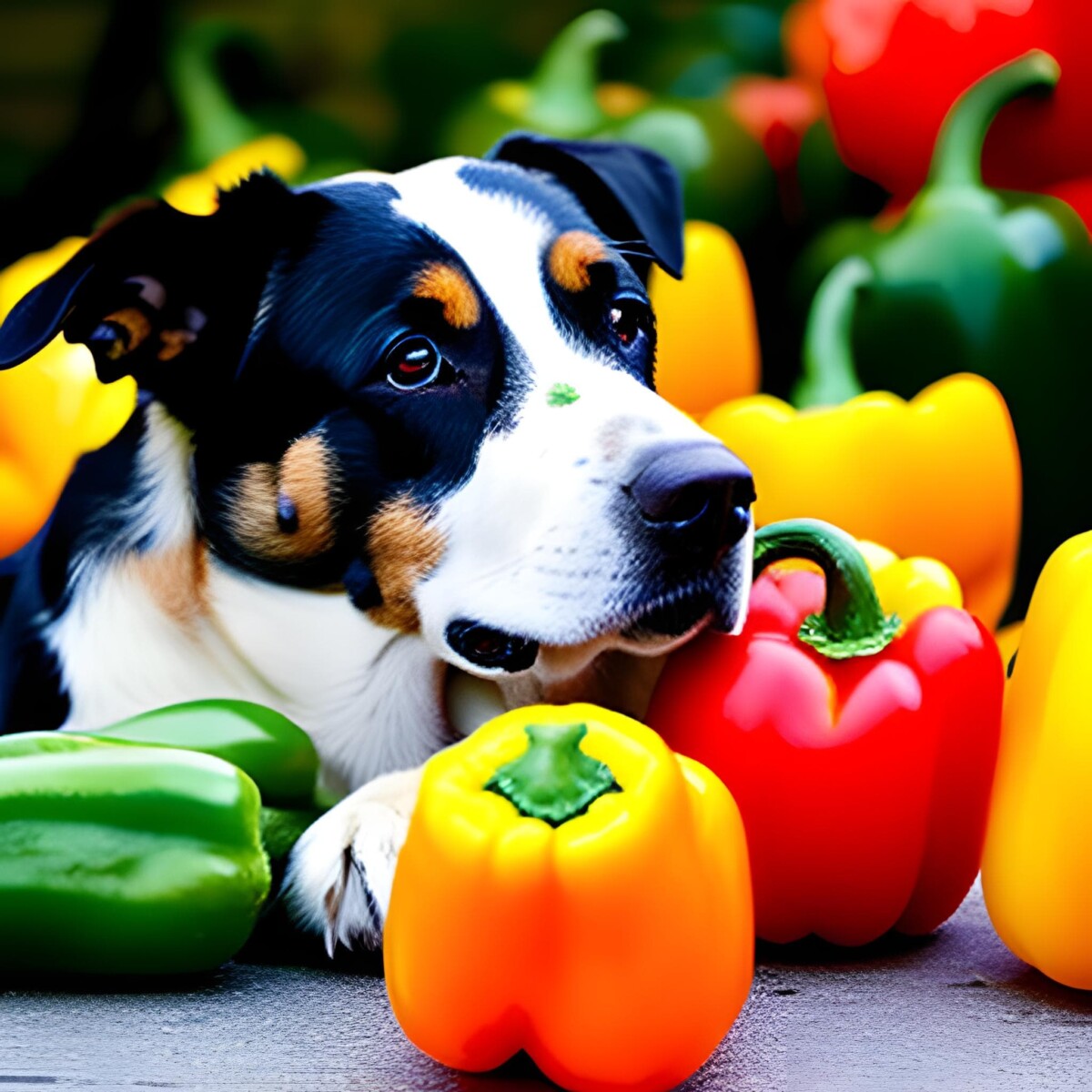Dogs are known for their curious nature and their willingness to try new things, including human foods. Bell peppers, with their crunchy texture and sweet taste, may catch your dog’s attention.
But before you share a slice, it’s important to understand whether bell peppers are safe and beneficial for your furry friend.
Can Dogs Eat Bell Peppers: Table of Contents
Can Dogs Eat Bell Peppers
Yes. Dogs can safely eat bell peppers in moderation. Bell peppers are a good source of vitamins A and C, which can benefit dogs’ immune systems and overall health.
Remove the seeds and stems to avoid digestive issues. Introduce bell peppers gradually to monitor any potential allergies or stomach upset.
Nutritional Value of Bell Peppers
Bell peppers are a rich source of vitamins and minerals that contribute to a well-balanced diet. They are low in calories and contain vitamins A, B6, C, and K. Additionally, bell peppers are packed with antioxidants and dietary fiber, which can promote digestive health.
Benefits of Bell Peppers for Dogs
The high vitamin C content can support your dog’s immune system, while the dietary fiber can aid in digestion. Bell peppers also contain phytonutrients that have anti-inflammatory properties, which could be beneficial for dogs with certain health conditions.
Can Dogs Eat Raw Bell Peppers?
Yes, dogs can safely eat raw bell peppers. Raw peppers retain their crisp texture and nutritional value, making them a refreshing and healthy treat for your pup. Remember to remove the seeds and core before offering a slice to your dog to prevent any choking hazards.
Can Dogs Eat Cooked Bell Peppers?
Cooked bell peppers are generally safe for dogs as well. However, it’s important to avoid adding any seasoning, especially those that contain ingredients toxic to dogs, such as garlic and onions. Plain, cooked bell peppers can be a tasty addition to your dog’s meals.
Bell Pepper Colors and Their Effects
Bell peppers come in various colors, including green, red, yellow, and orange. Each color has a slightly different nutrient profile.
For instance, red bell peppers are the ripest and contain the most vitamins, while green peppers are less ripe and have a milder taste. Consider your dog’s preferences and any specific health needs when choosing the color to share.
Risks and Precautions
While bell peppers are generally safe, there are a few precautions to keep in mind. Dogs with sensitive stomachs might experience digestive upset if they consume too much.
Some dogs may be allergic to bell peppers, so it’s important to monitor your dog for any signs of adverse reactions.
Moderation is Key
As with any treat, moderation is key. While bell peppers offer nutritional benefits, they should only be a small part of your dog’s diet. Too many peppers can lead to an upset stomach or diarrhea.
How to Serve Bell Peppers to Dogs
To serve bell peppers to your dog, ensure they are washed, seeds and core removed, and cut into appropriate-sized pieces. You can offer them as standalone snacks, incorporate them into homemade dog treats, or mix them with your dog’s regular food.
Recipes: Bell Pepper Dog Treats
Bell Pepper Crunchies:
Ingredients:
1 bell pepper (any color)
1 cup whole wheat flour
1/4 cup water
1 egg
Instructions:
Preheat the oven to 350°F (175°C).
Remove the seeds and core from the bell pepper, then finely chop it.
In a bowl, mix the chopped bell pepper, whole wheat flour, water, and egg to form a dough.
Roll out the dough and cut it into small shapes.
Place the shapes on a baking sheet and bake for about 20 minutes or until they’re golden brown and crispy.
Allow the treats to cool before offering them to your dog.
Signs of Bell Pepper Allergy
While rare, some dogs may be allergic to bell peppers. Watch out for signs such as itching, redness, swelling, vomiting, or diarrhea after consumption. If you suspect an allergy, consult your veterinarian.
When to Consult a Veterinarian
If you’re unsure whether to include bell peppers in your dog’s diet or if your dog shows any adverse reactions after consumption, consult your veterinarian. They can provide personalized advice based on your dog’s individual health needs.
Vet Q&A
Can dogs eat bell pepper seeds?
It’s best to remove the seeds before feeding bell peppers to your dog, as they can pose a choking hazard.
Are all bell pepper colors safe for dogs?
Yes, all bell pepper colors are safe for dogs. However, consider your dog’s preferences and nutritional needs when selecting a color.
Can I feed my dog stuffed bell peppers?
Stuffed bell peppers may contain ingredients that are not safe for dogs, such as onions and garlic. Stick to plain, cooked bell peppers without seasonings.
How often can I give bell peppers to my dog?
Bell peppers should be an occasional treat and not a regular part of your dog’s diet. Once or twice a week is generally a safe frequency.
My dog ate a large amount of bell pepper. What should I do?
If your dog consumes a large amount of bell pepper and shows signs of digestive upset, monitor their condition. If symptoms persist or worsen, contact your veterinarian for guidance.
My Senior Paws is a participant in the Amazon Services LLC Associates Program, an affiliate advertising program designed to provide a means for sites to earn advertising fees by advertising and linking to Amazon.com. We also participate in other affiliate programs which compensate us for referring traffic.




